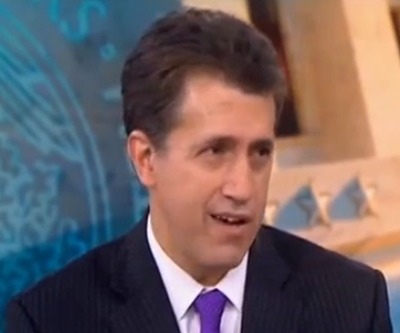
Tony Crescenzi, VP and market strategist at PIMCO, argues in the latest missive from the the world’s largest money manager that the bond market has run way ahead of US monetary policy.
PIMCO boasts an astonishing $2 trillion of assets under management and comments from the company and especially co-founder Bill Gross on interest rates and monetary policy are closely followed by gold investors.
Gross’s flagship Total Return fund has placed huge bets on quantitative easing with Treasuries and Treasury-related securities and US mortgage debt, the Fed’s favourite purchases under its $85 billion a month QE purchase program, making up the bulk of the fund’s assets.
QE has been a massive boon for gold. Despite the 2013 meltdown, the metal is still up more than 60% since Fed chairman Ben Bernanke announced the first round of asset purchases under QE in December 2008.
Higher market rates, which PIMCO says are pricing in four 25-basis point hikes, have led many investors to switch out of gold, which produces no yield, thanks to better returns elsewhere.
But that rotation out of gold to chase yield as evidenced by the outflows from gold-backed ETFs, may have been slightly overdone and even premature.
The appreciation in the US dollar which hurts gold could also be stemmed if rates remain relatively low.
PIMCO’s Crescenzi says interest rates “won’t ultimately move too far from current levels”, with the federal funds rate pegged at 0% to 0.25% remaining in place possible as far out as 2016:
So, how soon will the 6.5% unemployment threshold be reached? In our view, with the jobless rate falling about a half percentage point per year and a current rate of 7.4%, probably in about two years. To reach 6.5% unemployment by the end of 2014, as the market has priced, would require monthly payroll gains of about 300,000 per month – a gigantic leap of more than 100,000 per month compared to the past year, and something that has occurred only ten times in ten years.
Furthermore, the Fed is likely to be patient when the jobless rate reaches its target, owing to inflation that’s at a 50-year low (based on the Fed’s favored inflation gauge). This could add another six to nine months to the timeline, meaning the first rate hike may not occur until 2016. Yet, the markets are already priced for four quarter-point hikes by the end of 2015. To price in still more would be excessive to say the least, in our view.
The switch in positioning suggests to us that markets are now far more prepared for the possibility of a rise in market interest rates than they were before. In particular, the pricing in of Fed rate hikes provides a significant cushion against further increases in market interest rates. There’s only so far a market can move on the same thing, whether it is earnings data, economic indicators or Fed policy.
FLASHBACK: Bill Gross: ‘I would still buy gold here’